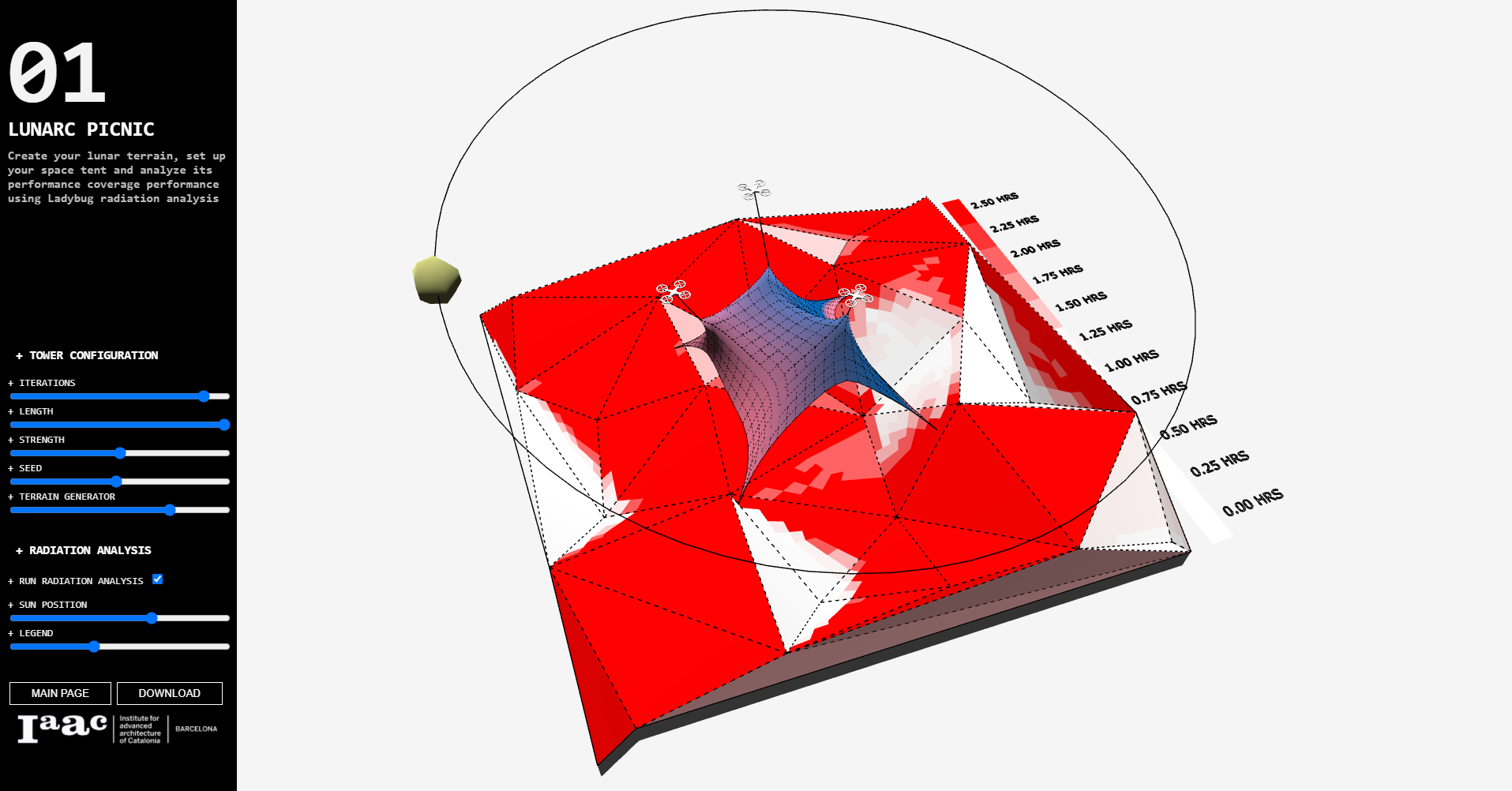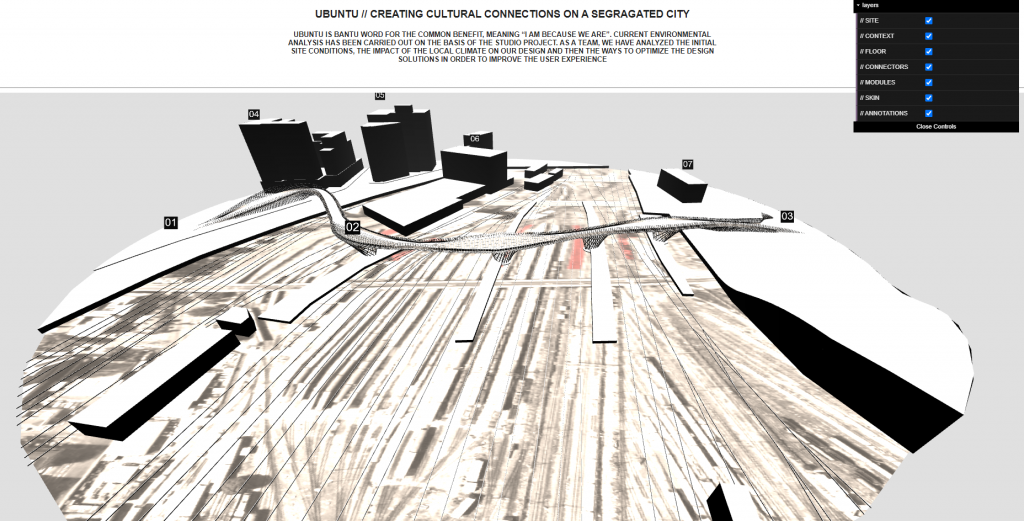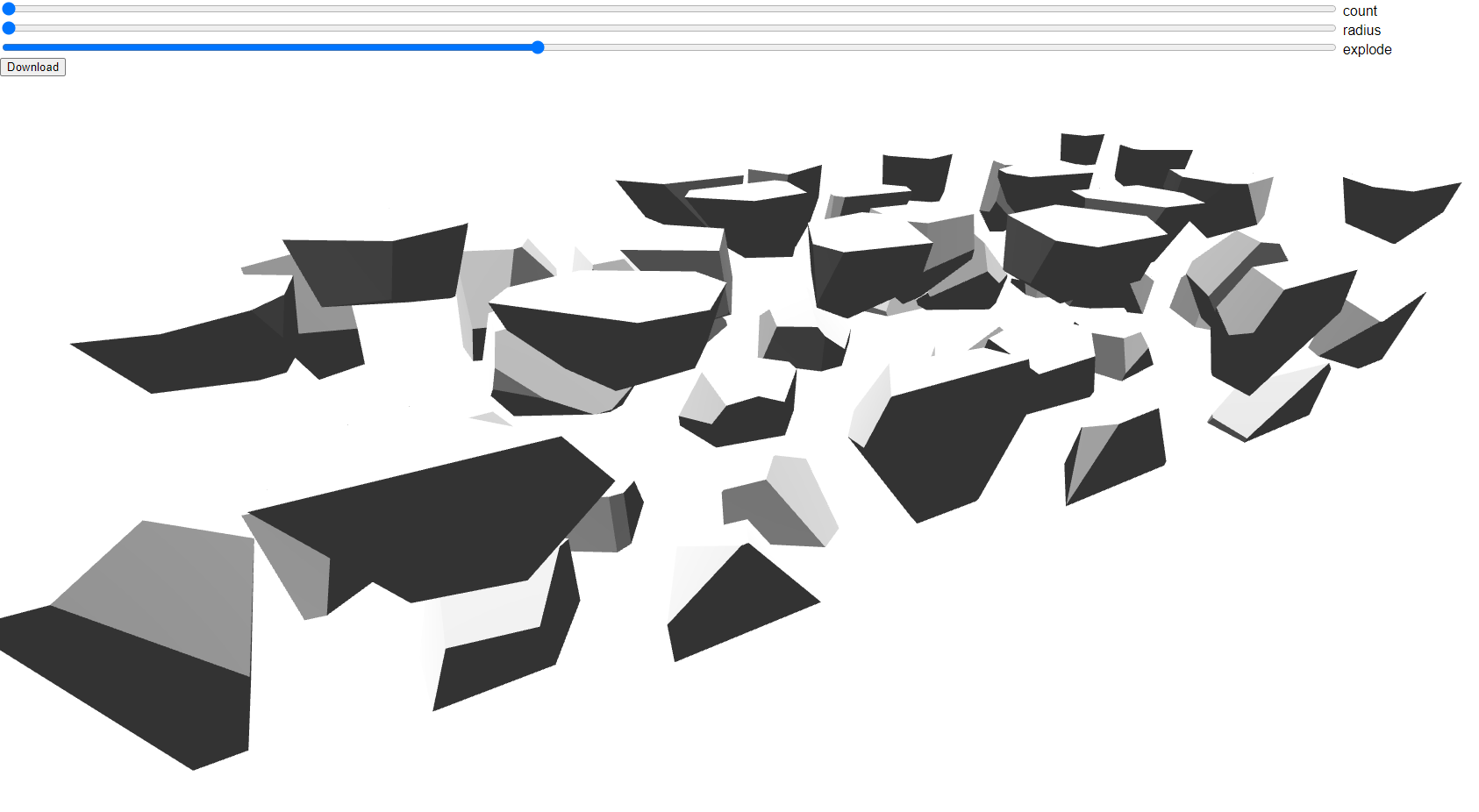
ABSTRACT
Architecture is an always-evolving field that is constantly reacting to its environment and finding new and innovative ways to provide better solutions and habitats for all. Lately, because of the global pandemic and the constant development of digital infrastructures, we find ourselves having to embrace a new work-from-home reality where digital and cloud-based systems became the main vehicle for collaboration.
Lunar configurator is an ongoing exploration of how this new architecture can adapt to the new ways of doing, where we develop new ways of collaboration by creating cloud-based systems that can open and democratize the use and access of complex operations and scripts to the global audience.
// DIGITAL INFRAESTRUCTURE

Above is a diagrammatic explanation of the digital infrastructure used to design and develop the lunar configurator. These tools and systems were introduced to us along the semester and become the foundation of our final project.
// THE APP
After preparing the architecture and infrastructure of all the different parts, I publish the site using a Heroku app called “Lunark”. To access the site, click on this link: LUNAR RESIDENCY. The site has been divided into 5 parts:
- Data Management Exercises: The final projects created for the Data Management seminar
- In-class assignments: A compilation of our learnings and explorations
- Examples and References: Series of projects created by the faculty to serve as examples
- Final Studio Project: Presentation of the studio project using what we have learned from Data Management seminar
- Credits
01 // DATA MANAGEMENT EXERCISES
For the final assignment, I have created a single website that compiles the three applications that I developed to showcase some of the capabilities of Rhino Compute together with Heroku, ThreeJS, and HTML/Javascript. To access the website please use the following link: LUNAR RESIDENCY

EXCERCISE 01 + LUNAR PICNIC

On this first exercise, you can set up your very first lunar tent as a temporary structure. This is using Rhino compute to solved a grasshopper definition called ‘lunar_tent.gh’ that reads the live parameters been input from the web-browser and feed them onto the grasshopper script. This particular script uses Kangaroo zombie solver for creating the tensile structure and ladybug sun radiation analysis for the sun-hour analysis.
EXCERCISE 02 + LUNAR SPACE RESIDENCY

On the second exercise, you will be able to run a stochastic aggregation to create your first lunar residency. This definition called lunar_aggregation.gh’ uses a grasshopper plugin in called Wasp, that allows you to create different types of aggregations using rules-bases systems (more info here). Once the aggregation is defined, you can then run a radiation analysis using the radiation component from Ladybug.
02 // IN-CLASS ASSIGNMENTS
Together with the final project, I added all the different in-class exercises we did during the course that helped us learn and develop the necessary skills. These are basic exploration on different areas that allowed us to explore each process independently to later combined them on the final projects. You can access these exploration directly from the website.

+Below, a Rhino model loaded onto the web browser using the 3DM Loader from the Three.JS library
+In the second exercise below, a simple grasshopper script that it is been operated from the web browser using three numeric sliders.
03 // EXAMPLES AND REFERENCE PROJECTS
This is a collection of example exercises created by the faculty to showcase the process and capabilities in different areas. Here you can find interesting and fun scripts. Go and enjoy!

04 // FINAL STUDIO PROJECT
In this final section, I decided to use it to showcase the final studio project from which all the previous assignments were drawing inspiration from. This project was a modular residential community on the moon that needs to grow and adapt to the unforeseen lunar challenges. In this section, you can access the presentation, models, galleries, and final documentation.

+Below is the main infrastructure Rhino model for the final studio project where you can explore the main systems turning the different layers off.
// PRESENTATION
As part of the final assignment, we had to prepare a 3 min presentation showing the final project along with the different assignments we have created along with the seminar:
// CREDITS
Lunar Configurator is a project of IAAC, Institute for Advanced Architecture of Catalonia developed at Master in Advanced Computation for Architecture & Design in 2020/21 by
Students: German Otto Bodenbender
Faculty: Luis Fraguada and Will Pearson


